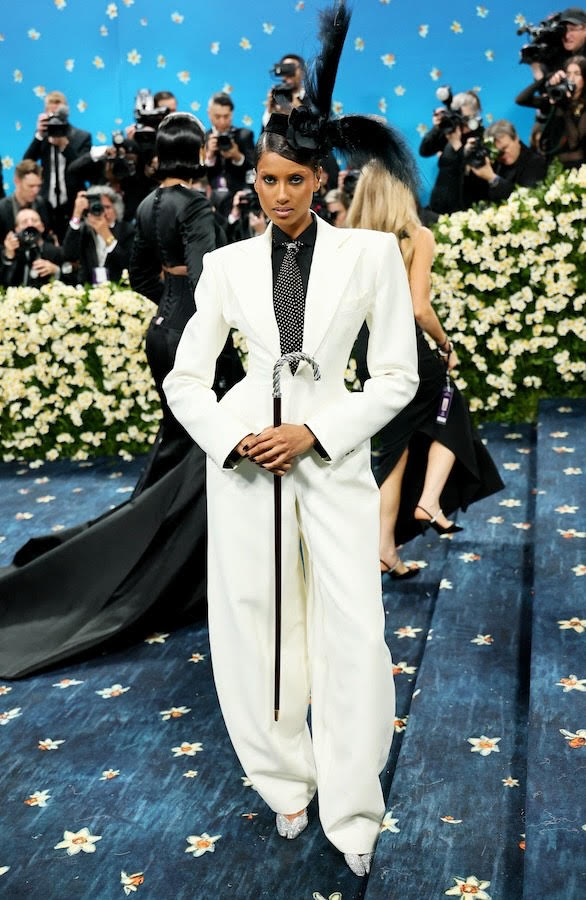
The 2025 Met Gala: Honoring the Legacy of Black Dandyism and the History of Black Fashion
Written by Anna Lazai
The Met Gala, fashion’s most glamorous and culturally resonant evening, has always been more than just a parade of couture—it’s a stage for storytelling, self-expression, and historical reflection. This year, the Costume Institute’s theme, “Tailoring Black Style,” paid tribute to the profound and enduring influence of Black fashion, with a particular focus on the tradition of Black Dandyism. The evening celebrated how fashion, especially for Black communities, has long been a tool of resistance, pride, and radical self-definition.
Black Dandyism: Revolutionary Elegance Through Time
Dandyism, a movement that emerged in 19th-century Europe, was rooted in the display of exaggerated refinement and individuality. For Black men, however, it became a powerful act of defiance. Adopting the polished codes of European elite fashion wasn’t about assimilation—it was about reclaiming visibility and asserting autonomy within systems that denied both. In colonial and post-slavery societies, this strategic elegance challenged power structures, redefined masculinity, and turned fashion into a site of protest.
During the Harlem Renaissance, Black Dandyism evolved into a language of artistry and intellect. Writers, artists, and jazz musicians used style not just to dazzle, but to declare identity. Today, the legacy lives on in figures like Billy Porter, André 3000, and the unforgettable icons of the 2025 Met Gala.
Modern Dandyism on the Met Carpet
As guests ascended the iconic Met steps, a wave of avant-garde takes on Dandyism stole the spotlight—blurring lines between tailoring, costume, and sculpture.
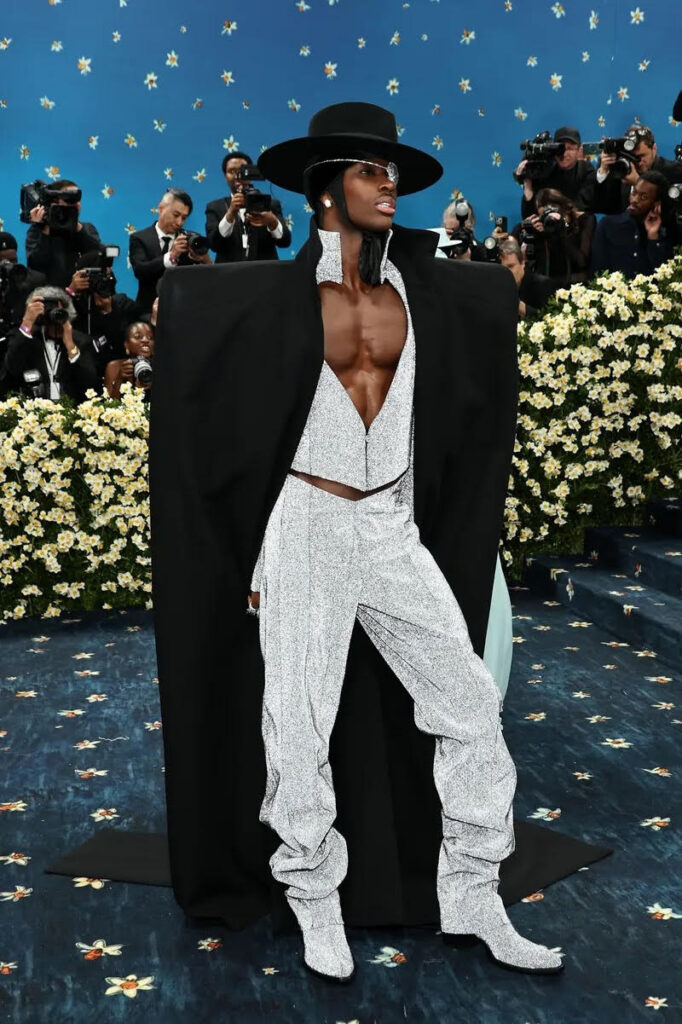
Model Alton Mason brought futuristic flair to his sleek BOSS ensemble with a shimmering silver eyepatch, reinventing the dandy as a high-fashion pirate and channeling a new-age elegance. His look reflected the ongoing evolution of Black style, merging precision tailoring with audacious individuality.
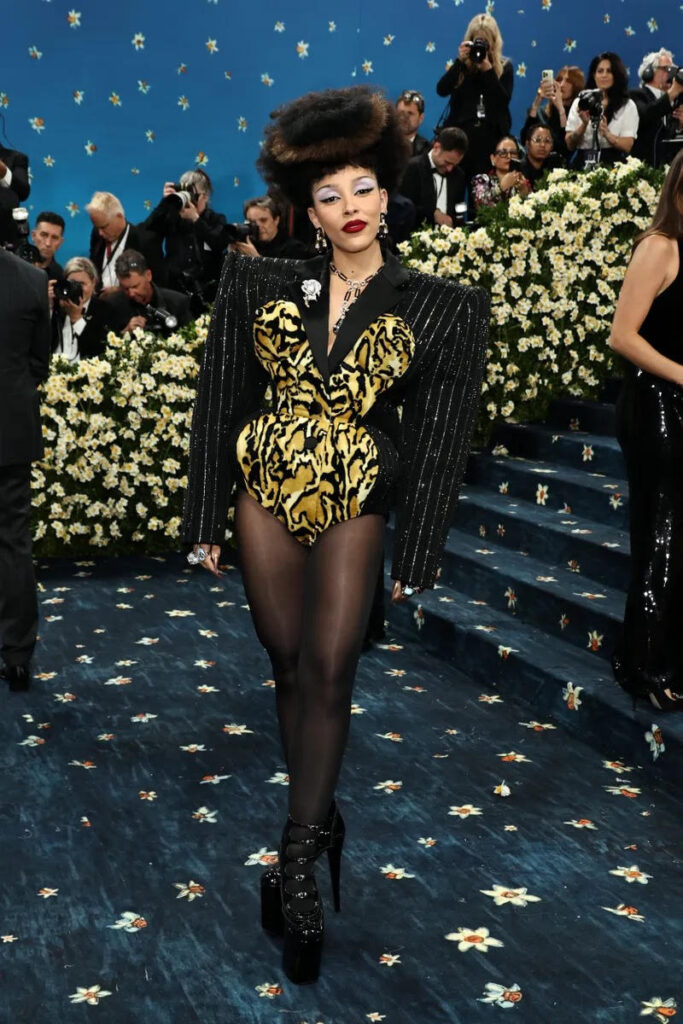
Doja Cat, in Marc Jacobs, delivered one of the evening’s most surreal and avant-garde ensembles. Her hyper-structured silhouette—with exaggerated shoulders, a sculpted bodice, and a mix of glitter pinstripes and animal print—transformed her into a surreal character from a fashion dreamscape. She embodied both performance and provocation.
Teyana Taylor stunned in The Blonds, fusing Harlem Renaissance poise with Afro-futurist fantasy. Her crimson pinstripe suit, sweeping cape embroidered with “Harlem Rose,” and dramatic accessories—including a feathered top hat and silver chains—cast her as a time-traveling aristocrat. The look was part theater, part tribute, part prophecy.
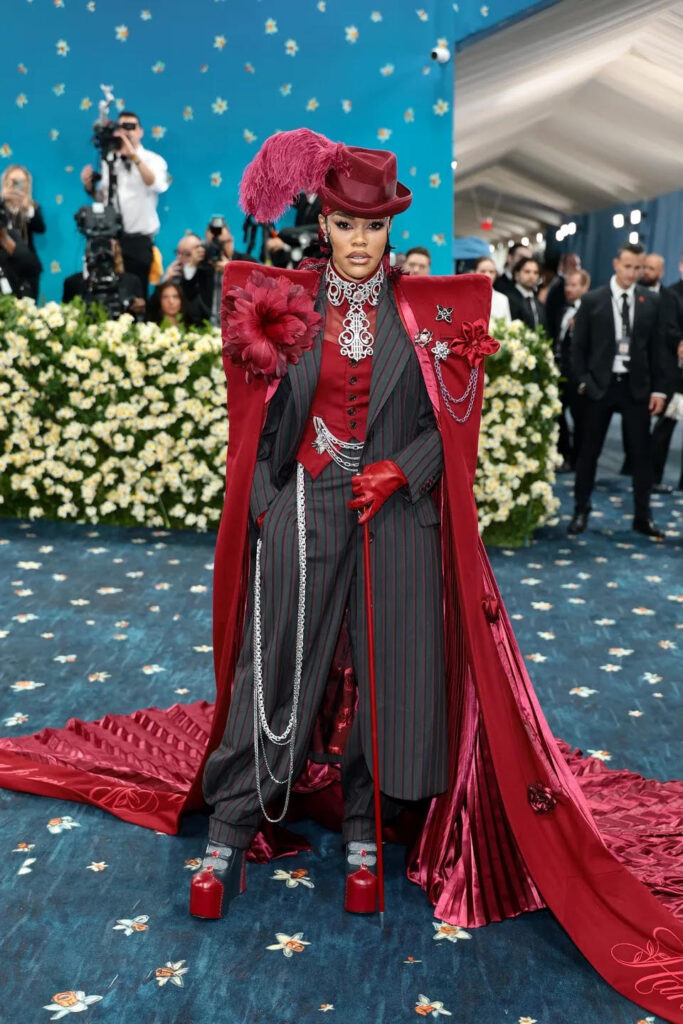
Janelle Monáe appeared in a sculptural Thom Browne creation—half pinstripe suit, half labyrinthine red-and-black art piece. Topped with a tilted bowler and monocle, she redefined tailoring as both fashion and resistance, asserting identity through rigid lines and radical form.
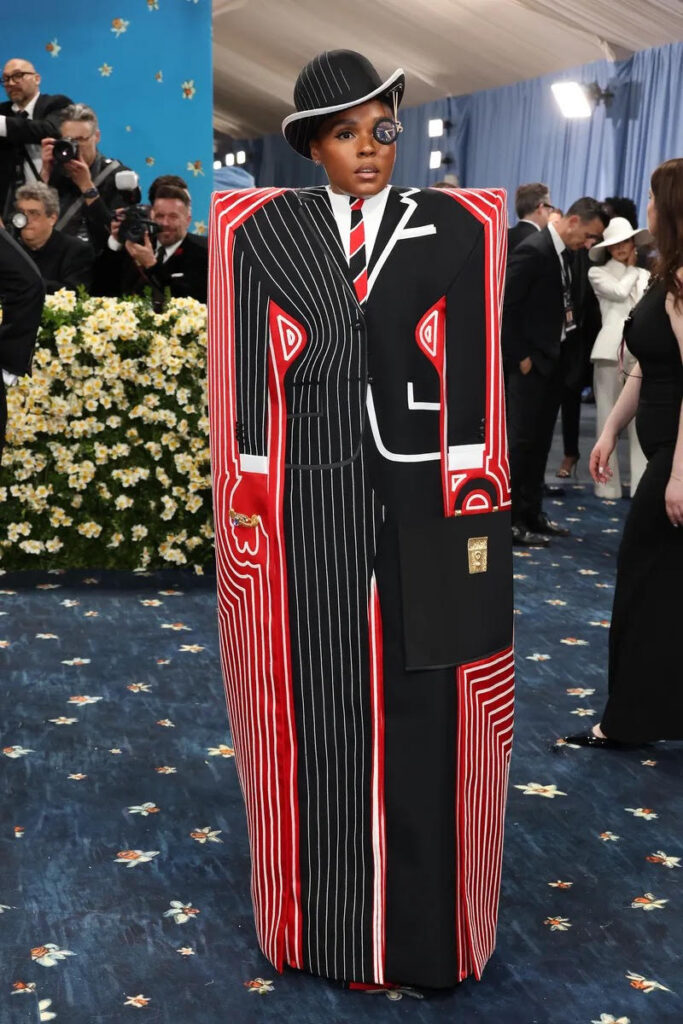
Accessories as Storytelling
Accessories at the 2025 Met Gala weren’t mere embellishments—they were the punctuation marks to each fashion narrative. From oversized props to tiny surreal details, these additions redefined what accessorizing could mean.
Olivier Rousteing turned heads with a brass-plated Balmain sewing machine, a symbolic nod to craftsmanship and heritage. André 3000 pushed boundaries further, arriving with a full grand piano worn as a backpack—a surreal gesture equal parts absurd and sublime.
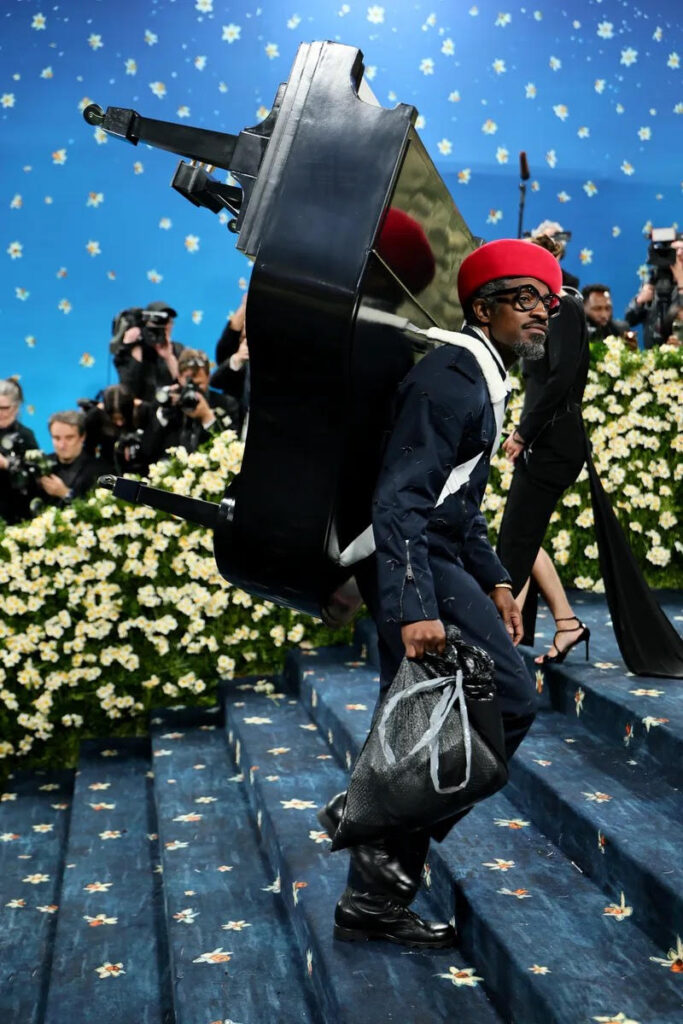
A$AP Rocky carried a silver-engraved umbrella, fusing utility with elegance, while Janelle Monáe’s monocle and vintage fedoras echoed the nostalgia of old-school dandy dressing. Teyana Taylor ticked every box with a cane, watch fob, fedora, and brooches, fully leaning into the meticulous codes of dandy style. Alton Mason’s sparkling eyepatch proved how even the smallest element could carry massive visual impact.
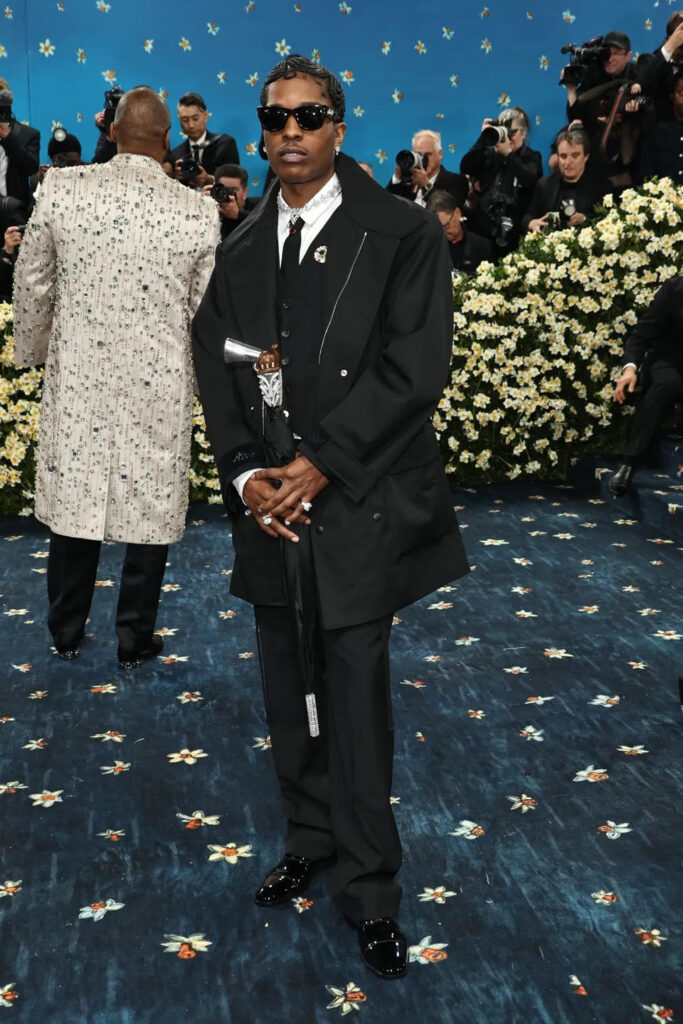
Suits of Sovereignty: The Classic Re-imagined
While many looks were nontraditional, others honored the roots of Dandyism with cleaner lines and aristocratic restraint. These were suits with soul—elevated by subtle details that spoke volumes.
Zendaya arrived in a crisp white Louis Vuitton tuxedo by Pharrell Williams—a look that nodded to the zoot suit era and the trailblazing Black women of ’70s rock culture. The ensemble was sleek, powerful, and unapologetically referential.
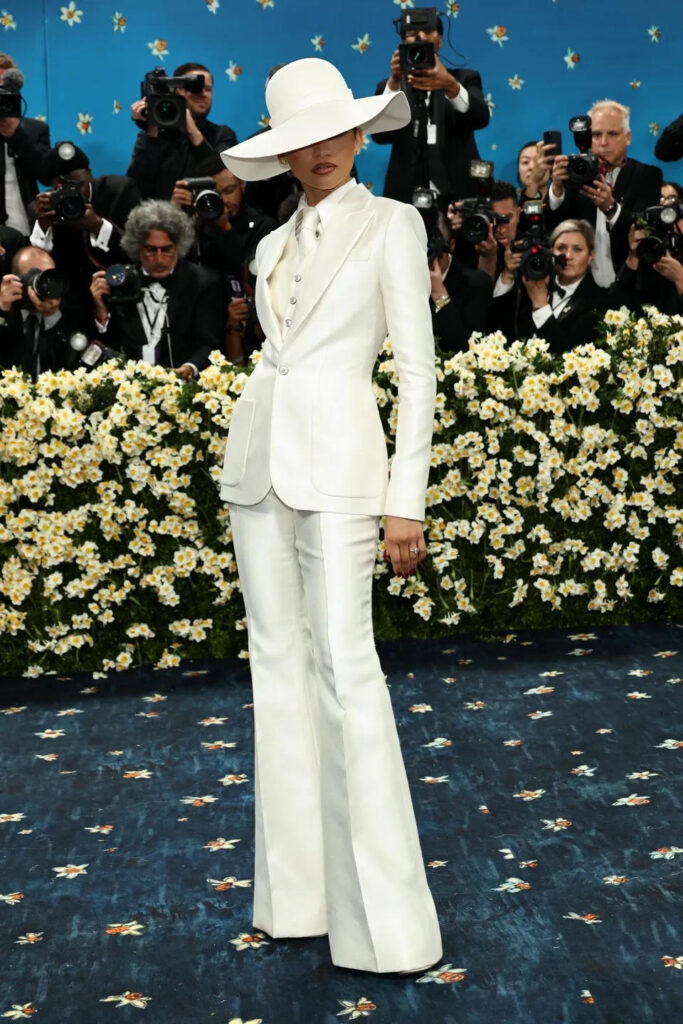
Imaan Hammam wore a white tailored suit by Magda Butrym, styled with a polka-dot tie and accessorized with a black floral headpiece, cane, and silver heels. Her look was polished yet dramatic—a modern-day homage to both elegance and defiance.

Khaby Lame in BOSS offered one of the night’s most poetic interpretations. His classic pinstripe three-piece was elevated by a waistcoat covered in vintage timepiece faces—symbolizing time, legacy, and his personal journey from viral silence to global icon status.
A New Era of Black Elegance
What the 2025 Met Gala ultimately proved is that Black fashion is not monolithic—it is expansive, avant-garde, classic, experimental, political, and unapologetically personal. From boundary-pushing tailoring to subversive accessorizing, each look became a bold declaration of legacy, identity, and the radical power of self-styling.
In honoring Black Dandyism, the night didn’t just nod to the past—it redefined the future. And as the carpet rolled up, the message was unmistakable: when elegance is charged with purpose, it doesn’t just resonate—it disrupts.
